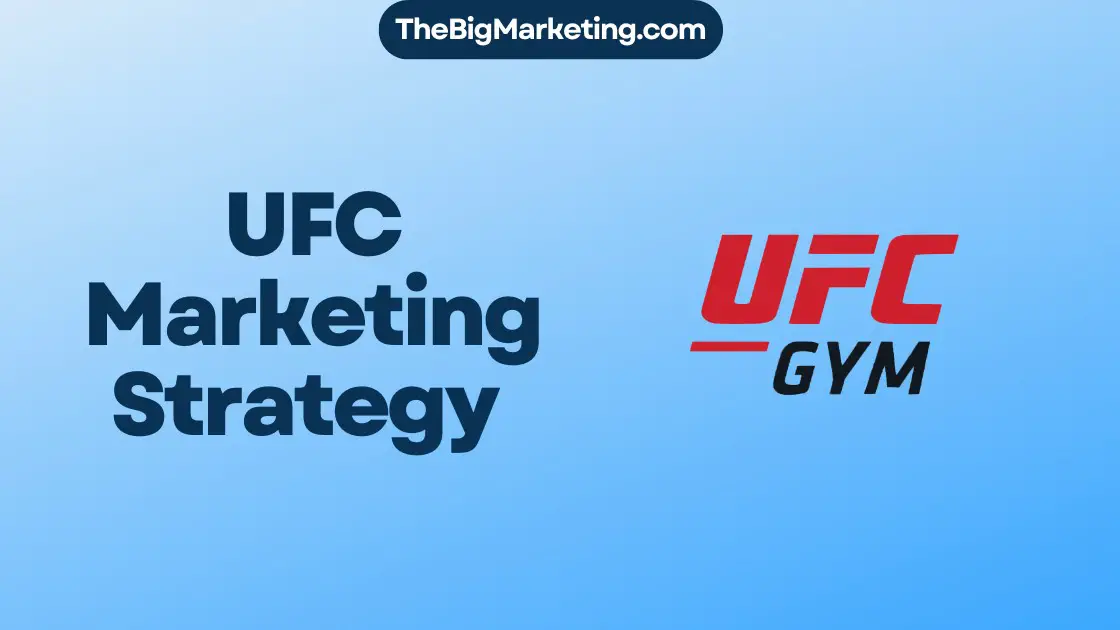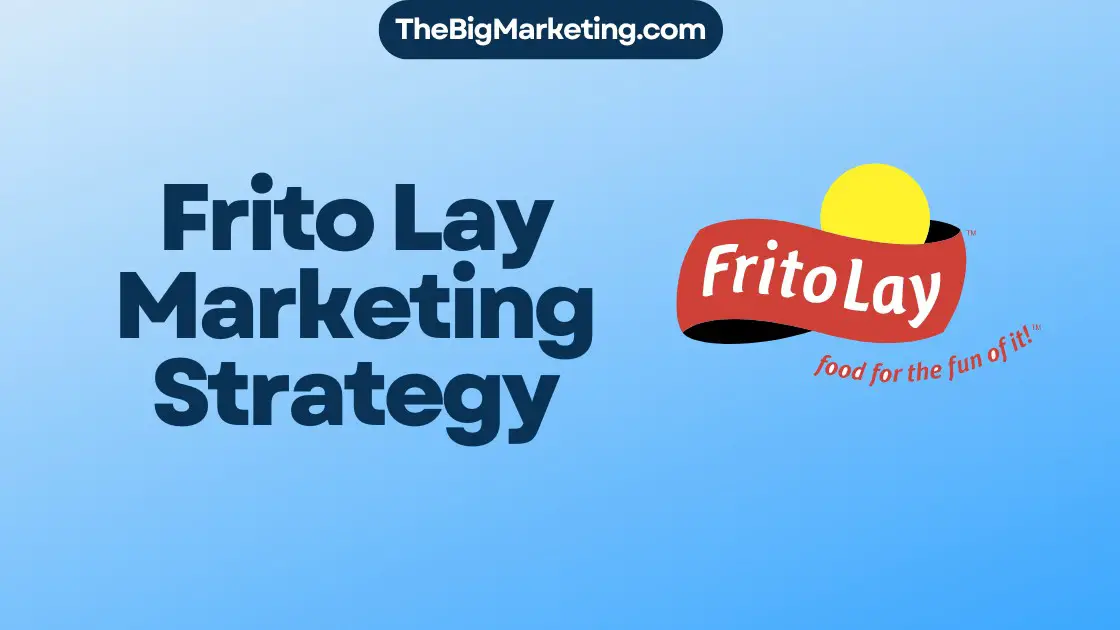The 20th Corporate Responsibility Research Conference (CRRC 2024) is set to take place on September 4-6, 2024, at Devonshire Hall, University of Leeds. The theme for this conference is “Corporate Social Responsibility (CSR) – Holistic and Issue-specific Approaches.” The abstract proposal deadline is April 12, 2024. This conference aims to explore the latest trends and developments in CSR and corporate sustainability.
Key Takeaways:
- CRRC 2024, the 20th Corporate Responsibility Research Conference, is scheduled for September 4-6, 2024, at Devonshire Hall, University of Leeds.
- The conference focuses on the theme of “Corporate Social Responsibility (CSR) – Holistic and Issue-specific Approaches.”
- Abstract proposals for CRRC 2024 should be submitted by April 12, 2024.
- The conference aims to explore current trends and advancements in CSR and corporate sustainability.
Introduction to CRRC’s Marketing Strategy
CRRC Corporation, a Chinese state-owned train manufacturer, has positioned itself as the largest player in the global railroad rolling stock industry. With a remarkable total revenue of $35 billion in 2021, CRRC’s market dominance is undeniable. However, due to the substantial government subsidies it has received, both explicit and implicit, CRRC’s marketing strategy has raised eyebrows, especially in international markets, such as North America.
In recent years, CRRC’s marketing strategy has come under scrutiny as the company’s global presence has expanded. While the government subsidies have undoubtedly played a significant role in CRRC’s market dominance, questions have been raised about how the company has leveraged its marketing efforts to secure its position as the leading contender in the railroad rolling stock industry.
With the growing international focus on sustainability and corporate social responsibility, CRRC’s marketing strategy must align with these evolving trends to maintain its competitive edge. By understanding CRRC’s marketing approach, we can gain insights into how the company is navigating the global market and adapting to changing customer demands and industry dynamics.
Key Elements of CRRC’s Marketing Strategy
CRRC’s marketing strategy encompasses various elements that contribute to its market leadership. These include:
- Market Segmentation: CRRC identifies and targets specific market segments based on their unique needs and demands. By tailoring its offerings to different customer segments, CRRC can position itself as a provider of customized solutions.
- Product Differentiation: CRRC focuses on developing technologically advanced rolling stock products that offer superior performance, efficiency, and safety features. By emphasizing the unique features of its products, CRRC can differentiate itself from competitors.
- Global Expansion: CRRC has made significant efforts to establish a global presence by expanding its operations and winning contracts in foreign markets. This expansion strategy allows CRRC to tap into new revenue streams and leverage its expertise in the railroad industry.
- Partnerships and Collaborations: CRRC actively seeks partnerships and collaborations with other industry players to enhance its technological capabilities, access new markets, and strengthen its competitive position. These collaborations enable CRRC to leverage the knowledge and resources of its partners for mutual benefit.
By employing these strategies, CRRC aims to maintain its market dominance and drive continued growth in the global railroad rolling stock industry.
Challenges and Future Outlook
While CRRC’s marketing strategy has propelled its success thus far, the company faces challenges in expanding its market share, particularly in international markets. CRRC must navigate regulatory environments, address concerns related to government subsidies, and adapt to changing customer preferences.
The future outlook for CRRC’s marketing strategy hinges on the company’s ability to respond to these challenges and seize opportunities in the evolving global market. By continuing to innovate, invest in research and development, and foster strong partnerships, CRRC can position itself for sustained growth and international success.
| Challenges | Future Actions |
|---|---|
| Regulatory Environment | CRRC needs to stay informed about changing regulations and comply with international standards to navigate regulatory challenges effectively. |
| Government Subsidies | CRRC should carefully manage concerns related to subsidies and transparently communicate its value proposition to international customers. |
| Customer Preferences | CRRC must continually assess customer demands and adapt its products and marketing efforts to meet evolving preferences for sustainable and technologically advanced solutions. |
| Competition | CRRC should closely monitor competitors and proactively develop strategies to maintain its competitive edge in the global market. |
As CRRC continues to shape its marketing strategy and navigate the challenges ahead, its ability to effectively communicate its value proposition, leverage partnerships, and adapt to market dynamics will be crucial.
The European Commission’s Investigation
The European Commission has initiated an investigation into CRRC Corporation’s marketing strategy under the Foreign Subsidies Regulation (FSR). This investigation was triggered by CRRC’s participation in an EU tender, in which the company later withdrew its bid. The FSR is a regulatory framework designed to address distortions in the EU market caused by financial subsidies from non-EU governments.
This investigation serves as the first test case for the European Commission’s new investigation power under the FSR. The goal is to ensure a fair and competitive market for all players involved. By scrutinizing CRRC’s marketing strategy, the European Commission aims to maintain a level playing field and protect the interests of European businesses.
European Commission’s Focus on Foreign Subsidies Regulation
The Foreign Subsidies Regulation is a significant step in the European Commission’s efforts to regulate the impact of foreign subsidies on the EU market. With globalization and increased competition, it becomes crucial to prevent distortions caused by unfair advantages derived from non-EU government support.
The investigation into CRRC’s marketing strategy focuses on the participation in an EU tender, highlighting the importance of adhering to fair competition practices in public procurement procedures. The European Commission is committed to upholding transparency, fairness, and competitiveness in the EU market.
The Implications for CRRC and the Rail Industry
The European Commission’s investigation into CRRC’s marketing strategy has broader implications for both CRRC and the rail industry as a whole. This investigation raises questions about the use of government subsidies and their impact on market competition.
CRRC, as a major player in the global railroad rolling stock market, relies on strategic marketing tactics to expand its market share. However, with the scrutiny from the European Commission and the increasing focus on fair competition, CRRC may need to reassess and adapt its marketing strategy to comply with the Foreign Subsidies Regulation and maintain a competitive edge.
At the same time, the investigation brings attention to the importance of fair and transparent practices in the rail industry. By addressing potential distortions caused by foreign subsidies, the European Commission aims to protect the interests of European businesses and promote a level playing field for all market participants.
To summarize, the European Commission’s investigation into CRRC’s marketing strategy under the Foreign Subsidies Regulation highlights the commitment to fair competition and regulating the impact of government subsidies. This investigation serves as a test case and has significant implications for CRRC and the rail industry as a whole.
Details of the Investigation
The investigation focuses on a public procurement procedure opened by Bulgaria’s Ministry of Transport and Communications. CRRC participated in this procedure, which involves the provision of electric “push-pull” trains and related maintenance and staff training services. The reported value of the contract is €610 million. The EC has until July 2, 2024, to make a final decision on whether there is a distortion of competition due to the foreign subsidy granted to CRRC.
The public procurement procedure initiated by Bulgaria’s Ministry of Transport and Communications is at the center of the investigation into CRRC’s marketing strategy. The procedure is related to the supply of electric “push-pull” trains, as well as the associated maintenance and staff training services. With a reported contract value of €610 million, this procurement process holds significant importance.
The European Commission (EC) is tasked with evaluating whether CRRC’s participation in this public procurement procedure has resulted in a distortion of competition. The investigation is being conducted under the Foreign Subsidies Regulation (FSR), which aims to address any market imbalances caused by financial subsidies from non-EU governments.
The EC has until July 2, 2024, to reach a final decision on the matter. This decision will determine whether CRRC’s marketing strategy and involvement in the public procurement procedure comply with the regulations set by the FSR. The outcome of this investigation will have far-reaching implications for CRRC’s future operations and market position.
Analysis of the CRRC Case
The CRRC case is of significant importance due to several factors. First and foremost, it highlights the European Commission’s focus on addressing competition distortion caused by government support to companies, specifically in jurisdictions like China. CRRC, as a state-owned company, has been the center of attention in this context.
Furthermore, the case sheds light on the infrastructure sector, which has experienced competition from non-EU companies that have received substantial financial assistance. This issue has raised concerns about maintaining a level playing field for businesses operating in the European market.
The investigation initiated by the European Commission and subsequent discussions regarding the enforcement gap emphasize the necessity for regulatory mechanisms such as the Foreign Subsidies Regulation (FSR). The FSR provides a framework for maintaining fair competition and preventing any undue advantage for state-owned companies in the EU market.
This case serves as a cautionary tale for companies to carefully consider their marketing strategies and notifications under the FSR. The regulatory landscape is evolving, and adherence to regulations is crucial to avoid potential penalties and reputational damage.
The Need for Fair Competition
The investigation into CRRC’s marketing strategy and its implications underline the significance of fair competition in the global marketplace. The European Commission’s actions aim to preserve competition, protect the interests of EU businesses, and ensure a level playing field.
By addressing the distortions resulting from government subsidies and highlighting the role of state-owned companies, the European Commission sets a precedent for future cases and reinforces the importance of transparent and ethical business practices.
With enhanced regulations, companies are prompted to establish marketing strategies that prioritize fair competition and compliance with the FSR to sustain their success in the European market.
CRRC’s Global Role in the Railroad Rolling Stock Market
CRRC Corporation, a Chinese state-owned enterprise, holds a significant position in the global railroad rolling stock market. With $35 billion in total revenue in 2021, CRRC’s dominance is undeniable. The company’s success can be attributed to various factors, including explicit government subsidies and implicit support from the Chinese government. Let’s take a closer look at CRRC’s global role in the industry.
Market Dominance and Revenue
CRRC’s revenue of $35 billion in 2021 reflects its position as a leading player in the global railroad rolling stock market. The company’s financial performance demonstrates its ability to secure substantial contracts and deliver high-quality products and services to its customers.
Government Subsidies and Support
CRRC has received explicit government subsidies amounting to $271 million in 2020 alone. Additionally, from 2015 to 2020, the company received a total of nearly $1.3 billion in government support. These explicit subsidies, however, represent only a fraction of the true extent of support, as estimates suggest that implicit subsidies are three times larger than the explicit ones.
Chinese State-Owned Enterprise
As a Chinese state-owned enterprise, CRRC benefits from the strategic interest and support of the Chinese government. The government’s commitment to developing and expanding the global rail industry has undoubtedly played a significant role in CRRC’s success. Through its support of state-owned enterprises like CRRC, China aims to establish itself as a global leader in the rail transportation sector.
In conclusion, CRRC’s dominant position in the global railroad rolling stock market is a testament to its marketing strategy and the support it receives as a state-owned enterprise. The explicit and implicit government subsidies, along with the strategic interest of the Chinese government, have propelled CRRC to the forefront of the industry. However, the company also faces challenges, particularly in international markets, as it navigates regulatory environments and competition from other players.
CRRC’s Expansion in the North American Market
CRRC Corporation has successfully made its mark in the North American market by winning seven lucrative passenger rail projects valued at over $4.3 billion between 2015 and 2020. The company’s ability to undercut competitors by an average of 21% on these projects has contributed to its growing presence in the region.
However, despite these achievements, CRRC’s penetration of foreign rolling stock markets, including North America, has not shown a clear upward trend. This can be attributed to various factors, such as the long lead time required for rail projects and investment restrictions imposed by other countries. These challenges have limited CRRC’s ability to expand its market share significantly.
Nonetheless, CRRC’s success in securing multiple projects in the North American market demonstrates the company’s competitive pricing and commitment to delivering quality rail solutions. As the company continues to navigate the complexities of the market, it will need to devise an effective marketing strategy to address the unique challenges and capitalize on future opportunities.
CRRC’s North American Rail Projects
Here are some of the notable passenger rail projects won by CRRC in the North American market:
| Project Name | Contract Value | Year |
|---|---|---|
| Los Angeles Metro Rail Fleet Procurement | $647 million | 2017 |
| TTC Toronto Subway Cars | $707 million | 2018 |
| Chicago Transit Authority Railcar Contract | $1.3 billion | 2019 |
| MBTA Orange and Blue Line Railcar Procurement | $280 million | 2020 |
These projects highlight the growing presence of CRRC in the North American rail market and its ability to secure high-value contracts. By offering competitive pricing and leveraging its expertise in rail technology, CRRC aims to further expand its foothold in the region and build long-term partnerships with transportation authorities and agencies.
CRRC’s Challenges in Expanding its Market Share
Despite CRRC’s success in winning rail projects in North America, the company faces several challenges in expanding its market share. The nature of rail projects often involves a long lead time, which can hinder CRRC’s ability to quickly expand its presence in foreign markets.
Additionally, other countries have implemented restrictions on Chinese rail imports, posing further obstacles for CRRC. These restrictions can limit the company’s access to new markets and potential customers, affecting its ability to grow its market share.
These challenges contribute to the uncertainty surrounding CRRC’s ability to significantly expand its presence in the global rolling stock market. While the company has demonstrated success in winning rail projects, overcoming these obstacles and gaining a larger share of the market remains a complex endeavor.
Factors Hindering CRRC’s Expansion
There are two primary factors that hinder CRRC’s expansion efforts:
- The long lead time of rail projects
- Restrictions on Chinese rail imports implemented by other countries
The Long Lead Time of Rail Projects
Rail projects, such as the construction of new railways or the procurement of rolling stock, typically involve substantial planning, coordination, and implementation. The complexity of these projects often results in a long lead time from the initial planning phase to project completion.
For CRRC, this long lead time means that the company may face delays in realizing the full benefits of winning rail projects. The time required for project execution, including manufacturing and delivery of rolling stock, can impact CRRC’s ability to quickly expand its market share.
Restrictions on Chinese Rail Imports
Several countries have implemented restrictions on Chinese rail imports due to various reasons, including concerns about competition, national security, and economic interests. These restrictions can limit CRRC’s access to new markets, making it more challenging for the company to expand its market share.
By imposing restrictions on Chinese rail imports, countries may prioritize domestic or local manufacturers, create barriers to entry for foreign companies, and protect their own rail industry. These policies can impact CRRC’s ability to penetrate foreign markets and secure new customers.
Uncertainty Surrounding Market Expansion
CRRC’s challenges in expanding its market share, coupled with the long lead time of rail projects and restrictions on Chinese rail imports, create an environment of uncertainty for the company. While CRRC has demonstrated success in winning rail projects, these obstacles and uncertainties highlight the complexities of expanding its presence in the global rolling stock market.
It is crucial for CRRC to navigate these challenges, adapt its marketing strategy, and explore new opportunities to overcome these obstacles. By doing so, the company can strive to expand its market share and maintain a competitive position in the global railway industry.
| Challenges | Impact on Market Expansion |
|---|---|
| Long lead time of rail projects | Delays in realizing the full benefits of winning rail projects and expanding market presence |
| Restrictions on Chinese rail imports | Limited access to new markets and potential customers |
The table and image above summarize the challenges faced by CRRC in expanding its market share and the impact these challenges have on the company’s market expansion efforts.
Strategic Interests and Future Outlook
The Chinese government’s strategic interest in the global rail industry is evident through initiatives like the Belt and Road Initiative (BRI). China aims to dominate the global rail transportation network by setting Chinese technical standards. CRRC’s role as a national champion State-Owned Enterprise (SOE) aligns with the government’s strategic goals. However, the future outlook for CRRC’s expansion in foreign markets remains uncertain, given the potential challenges and restrictions it faces.
The Belt and Road Initiative (BRI), launched in 2013 by the Chinese government, is a massive infrastructure and economic development project aimed at enhancing connectivity and promoting trade between China and countries along the ancient Silk Road routes. The initiative encompasses a network of railways, ports, roads, and pipelines that will facilitate trade and economic integration across Asia, Europe, Africa, and the Middle East.
As a key player in the global rail industry, CRRC is well-positioned to contribute to the Belt and Road Initiative. The company’s expertise in manufacturing and developing advanced railway technology makes it a valuable partner for infrastructure projects under the initiative. CRRC’s extensive product portfolio, which includes high-speed trains, locomotives, and rolling stock, can support the construction and operation of railways in various countries participating in the BRI.
The Chinese government’s support for CRRC’s expansion aligns with its broader goals of developing strategic industries and projecting Chinese influence globally. By promoting Chinese technical standards and exporting its rail technology, China aims to shape the future of global rail transportation. CRRC’s marketing strategy, therefore, plays a crucial role in positioning the company as a global leader in the rail industry.
The Future Outlook for CRRC
Despite the Chinese government’s strategic backing and the potential opportunities presented by the Belt and Road Initiative, CRRC faces challenges in expanding its market share in foreign markets. One major challenge is the competition and skepticism surrounding Chinese rail imports. Several countries have raised concerns about the involvement of Chinese companies in critical infrastructure projects, citing issues of cybersecurity and national security.
Furthermore, some countries have implemented investment restrictions and protectionist measures, limiting CRRC’s access to foreign markets. These barriers create uncertainty for CRRC’s future expansion plans and require the company to adapt its marketing strategy accordingly.
CRRC must navigate the evolving regulatory landscape and address concerns related to government subsidies to build trust and credibility in international markets. An effective marketing strategy will be crucial in demonstrating CRRC’s commitment to quality, safety, and transparency. By highlighting its technological advancements, sustainable practices, and commitment to local partnerships, CRRC can position itself as a reliable and trustworthy partner for rail projects worldwide.
Nevertheless, the future outlook for CRRC remains promising. The global demand for rail infrastructure continues to grow, driven by urbanization, population growth, and the need for sustainable transportation solutions. As countries invest in modernizing their railway systems, CRRC can leverage its expertise and global presence to secure more project contracts and expand its market share in the years to come.
Implications for CRRC’s Marketing Strategy
The investigation by the European Commission and the challenges faced by CRRC in expanding its market share have significant implications for the company’s marketing strategy. As CRRC navigates these hurdles, it will be essential for the company to reassess its tactics and adapt to the evolving global competitive landscape.
CRRC’s marketing strategy should be designed to address the concerns related to government subsidies and effectively position itself in international markets. By carefully navigating the regulatory environment, CRRC can build a strong marketing strategy that not only complies with regulations but also highlights its unique value proposition.
The changing global competition presents both opportunities and challenges for CRRC. Embracing innovative marketing tactics and staying ahead of the competition will be crucial for the company’s success. CRRC should consider leveraging its strengths, such as its extensive experience in the railroad rolling stock market and its commitment to technological advancements, to differentiate itself and capture a larger market share.
In a highly competitive global market, CRRC should pay close attention to customer needs and preferences. By conducting thorough market research and understanding customer demands, CRRC can tailor its marketing efforts to effectively communicate the benefits of its products and services.
Key Implications for CRRC’s Marketing Strategy:
- Reassess marketing tactics in light of changing global competition
- Navigate the regulatory environment and address concerns related to government subsidies
- Position CRRC’s unique value proposition effectively in international markets
- Embrace innovative marketing tactics to stay ahead of the competition
- Leverage strengths in the railroad rolling stock market and technological advancements
- Tailor marketing efforts to address customer needs and preferences
By implementing a well-crafted marketing strategy that takes into account these implications, CRRC can enhance its position in the global market and maintain a competitive edge.
| Implications | Description |
|---|---|
| Reassess Marketing Tactics | CRRC should evaluate its current marketing tactics in light of the changing global competition. This may entail exploring new channels, refining messaging strategies, or adopting innovative approaches to reach potential customers. |
| Navigate Regulatory Environment | Given the concerns related to government subsidies, CRRC needs to ensure its marketing activities comply with relevant regulations. This entails staying updated on regulatory changes and taking proactive measures to address any potential issues. |
| Position Unique Value Proposition | CRRC should effectively communicate its unique value proposition in international markets. This involves highlighting the company’s expertise, technological advancements, and commitment to sustainability and innovation. |
| Embrace Innovation | In a competitive landscape, CRRC should prioritize innovation in its marketing tactics. This may include leveraging emerging technologies, adopting data-driven strategies, or exploring new ways to engage customers and create differentiation. |
| Leverage Strengths | CRRC’s extensive experience in the railroad rolling stock market and its commitment to technological advancements are key strengths. The marketing strategy should emphasize these strengths to establish CRRC as a leader in the industry. |
| Tailor Marketing Efforts | Understanding customer needs and preferences is crucial for successful marketing. CRRC should conduct thorough market research and segment its target audience to deliver tailored messages that resonate with potential customers. |
Conclusion
The case study on CRRC’s marketing strategy sheds light on the company’s challenges in international markets and the regulatory landscape. As the dominant player in the global railroad rolling stock market, CRRC’s strategies for expansion have faced scrutiny. The European Commission’s investigation into potential competition distortions under the Foreign Subsidies Regulation serves as a test case for enforcement.
As CRRC navigates these challenges, its marketing strategy will play a pivotal role in shaping its future success and maintaining a competitive edge. The company will need to reassess its tactics and adapt to the evolving global competition landscape. Navigating the regulatory environment and addressing concerns related to government subsidies will be crucial for CRRC’s marketing plan.
This case study serves as a valuable resource for understanding the complexities of CRRC’s marketing strategy and its impact on the company’s expansion. By analyzing the strategies employed by CRRC, marketers can gain insights into effective approaches for international markets. As companies look to globalize their operations, it is essential to understand the challenges and regulatory implications that may arise in different jurisdictions.
FAQ
What is the theme of the 20th Corporate Responsibility Research Conference (CRRC 2024)?
When is the abstract proposal deadline for the CRRC 2024 conference?
What is the focus of the European Commission’s investigation into CRRC?
What specific procurement procedure triggered the European Commission’s investigation into CRRC?
What is the deadline for the European Commission to make a final decision on the investigation into CRRC?
What are the reasons why the CRRC case is significant?
How much revenue did CRRC generate in 2021?
How much government subsidies has CRRC received?
What is the theme of the 20th Corporate Responsibility Research Conference (CRRC 2024)?
When is the abstract proposal deadline for the CRRC 2024 conference?
What is the focus of the European Commission’s investigation into CRRC?
What specific procurement procedure triggered the European Commission’s investigation into CRRC?
What is the deadline for the European Commission to make a final decision on the investigation into CRRC?
What are the reasons why the CRRC case is significant?
How much revenue did CRRC generate in 2021?
How much government subsidies has CRRC received?
FAQ
What is the theme of the 20th Corporate Responsibility Research Conference (CRRC 2024)?
The theme of the 20th Corporate Responsibility Research Conference (CRRC 2024) is “Corporate Social Responsibility (CSR) – Holistic and Issue-specific Approaches.”
When is the abstract proposal deadline for the CRRC 2024 conference?
The abstract proposal deadline for the CRRC 2024 conference is April 12, 2024.
What is the focus of the European Commission’s investigation into CRRC?
The European Commission’s investigation into CRRC focuses on the Foreign Subsidies Regulation and its potential impact on competition in the EU market.
What specific procurement procedure triggered the European Commission’s investigation into CRRC?
The European Commission’s investigation into CRRC was triggered by CRRC’s participation in a public procurement procedure opened by Bulgaria’s Ministry of Transport and Communications.
What is the deadline for the European Commission to make a final decision on the investigation into CRRC?
The European Commission has until July 2, 2024, to make a final decision on whether there is a distortion of competition due to the foreign subsidy granted to CRRC.
What are the reasons why the CRRC case is significant?
The CRRC case is significant because it targets a company from a jurisdiction that has been the EU’s focus for using government support, focuses on the infrastructure sector, and highlights the need for regulatory tools like the Foreign Subsidies Regulation.
How much revenue did CRRC generate in 2021?
CRRC generated billion in total revenue in 2021.
How much government subsidies has CRRC received?
CRRC has received explicit government subsidies of 1 million in 2020 and a total of nearly
FAQ
What is the theme of the 20th Corporate Responsibility Research Conference (CRRC 2024)?
The theme of the 20th Corporate Responsibility Research Conference (CRRC 2024) is “Corporate Social Responsibility (CSR) – Holistic and Issue-specific Approaches.”
When is the abstract proposal deadline for the CRRC 2024 conference?
The abstract proposal deadline for the CRRC 2024 conference is April 12, 2024.
What is the focus of the European Commission’s investigation into CRRC?
The European Commission’s investigation into CRRC focuses on the Foreign Subsidies Regulation and its potential impact on competition in the EU market.
What specific procurement procedure triggered the European Commission’s investigation into CRRC?
The European Commission’s investigation into CRRC was triggered by CRRC’s participation in a public procurement procedure opened by Bulgaria’s Ministry of Transport and Communications.
What is the deadline for the European Commission to make a final decision on the investigation into CRRC?
The European Commission has until July 2, 2024, to make a final decision on whether there is a distortion of competition due to the foreign subsidy granted to CRRC.
What are the reasons why the CRRC case is significant?
The CRRC case is significant because it targets a company from a jurisdiction that has been the EU’s focus for using government support, focuses on the infrastructure sector, and highlights the need for regulatory tools like the Foreign Subsidies Regulation.
How much revenue did CRRC generate in 2021?
CRRC generated $35 billion in total revenue in 2021.
How much government subsidies has CRRC received?
CRRC has received explicit government subsidies of $271 million in 2020 and a total of nearly $1.3 billion from 2015 to 2020. Estimates suggest that implicit subsidies are three times larger than explicit subsidies.
How many passenger rail projects did CRRC win in North America between 2015 and 2020?
CRRC won seven passenger rail projects worth over $4.3 billion in North America between 2015 and 2020.
What challenges does CRRC face in expanding its market share?
CRRC faces challenges in expanding its market share due to the long lead time of rail projects and the restrictions on Chinese rail imports imposed by other countries.
What is China’s strategic interest in the global rail industry?
China aims to dominate the global rail transportation network and has set Chinese technical standards through initiatives like the Belt and Road Initiative (BRI).
What are the implications of the European Commission’s investigation and CRRC’s challenges for its marketing strategy?
The European Commission’s investigation and CRRC’s challenges have implications for its marketing strategy, requiring the company to reassess its tactics, navigate the regulatory environment, and address concerns related to government subsidies.
.3 billion from 2015 to 2020. Estimates suggest that implicit subsidies are three times larger than explicit subsidies.
How many passenger rail projects did CRRC win in North America between 2015 and 2020?
CRRC won seven passenger rail projects worth over .3 billion in North America between 2015 and 2020.
What challenges does CRRC face in expanding its market share?
CRRC faces challenges in expanding its market share due to the long lead time of rail projects and the restrictions on Chinese rail imports imposed by other countries.
What is China’s strategic interest in the global rail industry?
China aims to dominate the global rail transportation network and has set Chinese technical standards through initiatives like the Belt and Road Initiative (BRI).
What are the implications of the European Commission’s investigation and CRRC’s challenges for its marketing strategy?
The European Commission’s investigation and CRRC’s challenges have implications for its marketing strategy, requiring the company to reassess its tactics, navigate the regulatory environment, and address concerns related to government subsidies.








